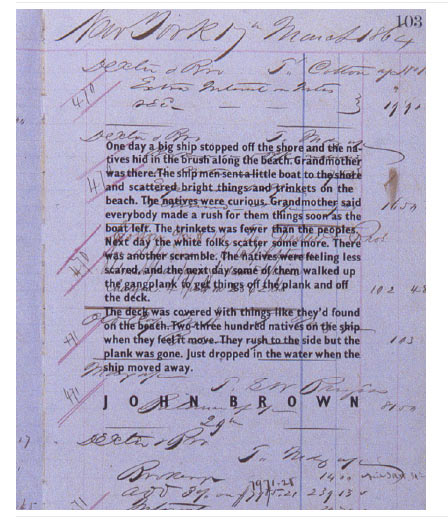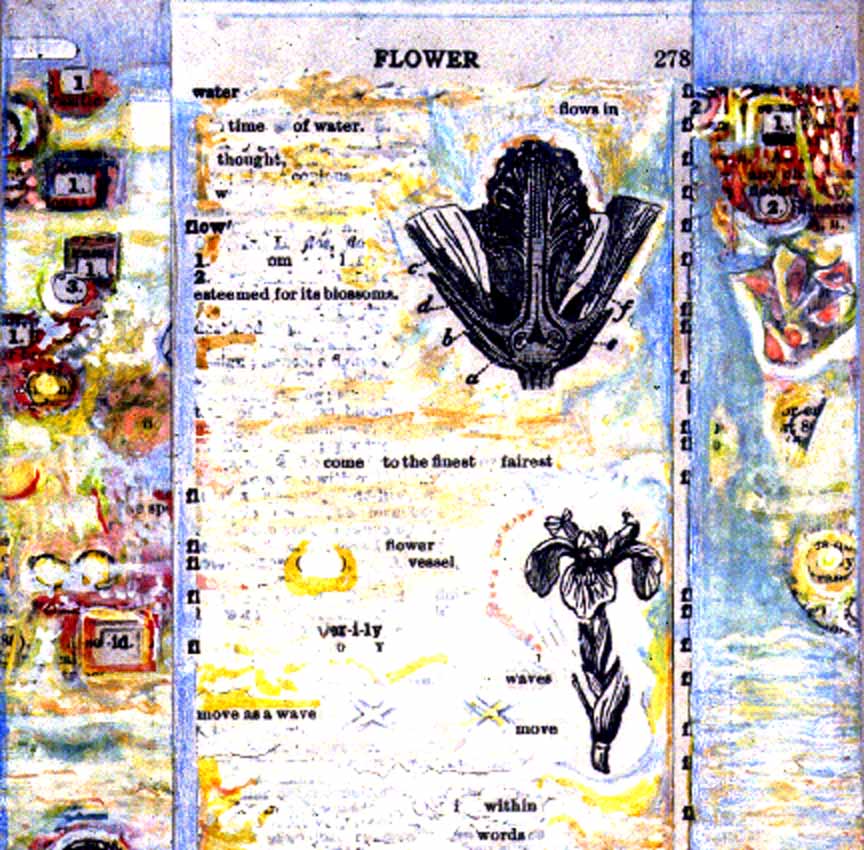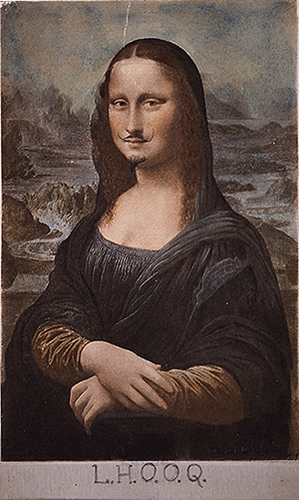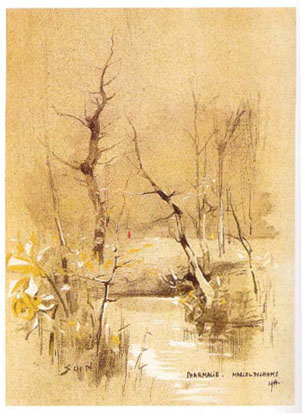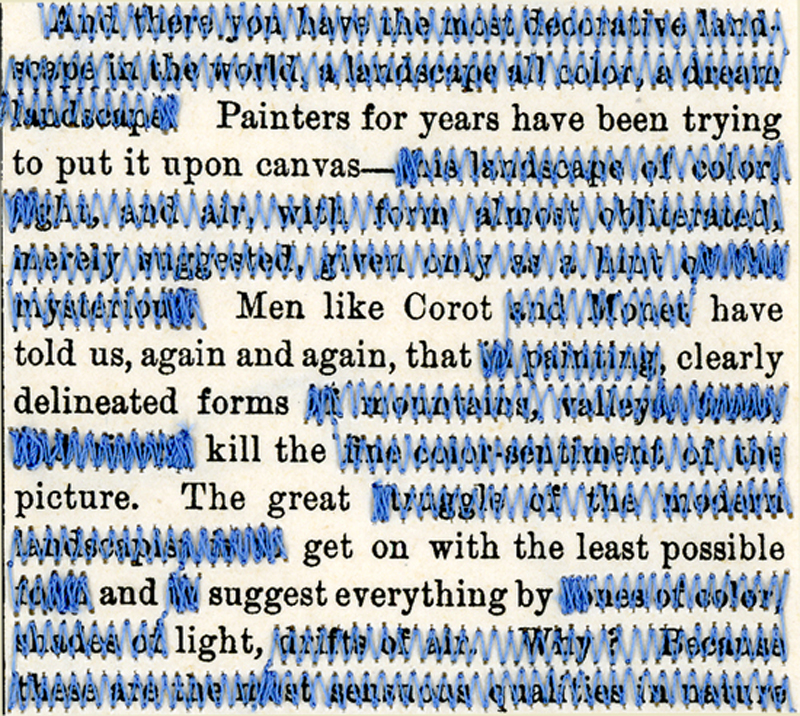
The new
Quarter After Eight erasure issue!
Mary Ruefle: "You see, I don’t actually read the books. I don’t read the text, unless the book is very, very, very interesting to me, and that has only happened twice in ten years and thirty-nine books. The only way I can describe it is like this: the words rise above the page, by say an eighth of an inch, and hover there in space, singly and unconnected, and they form a kind of field, and from this field I pick my words as if they were flowers." And lucky us, we can read her whole essay, "On Erasure,"
here.
 from Tom Phillips' first edition of A Humument (1970), which used to be W.H. Mallock's A Human Document. All available for your viewing pleasure, here. And many revised editions, here, here, and for your i-pad, here, and some discussion about how wonderful the i-pad is for A Humument, here.
from Tom Phillips' first edition of A Humument (1970), which used to be W.H. Mallock's A Human Document. All available for your viewing pleasure, here. And many revised editions, here, here, and for your i-pad, here, and some discussion about how wonderful the i-pad is for A Humument, here. 










